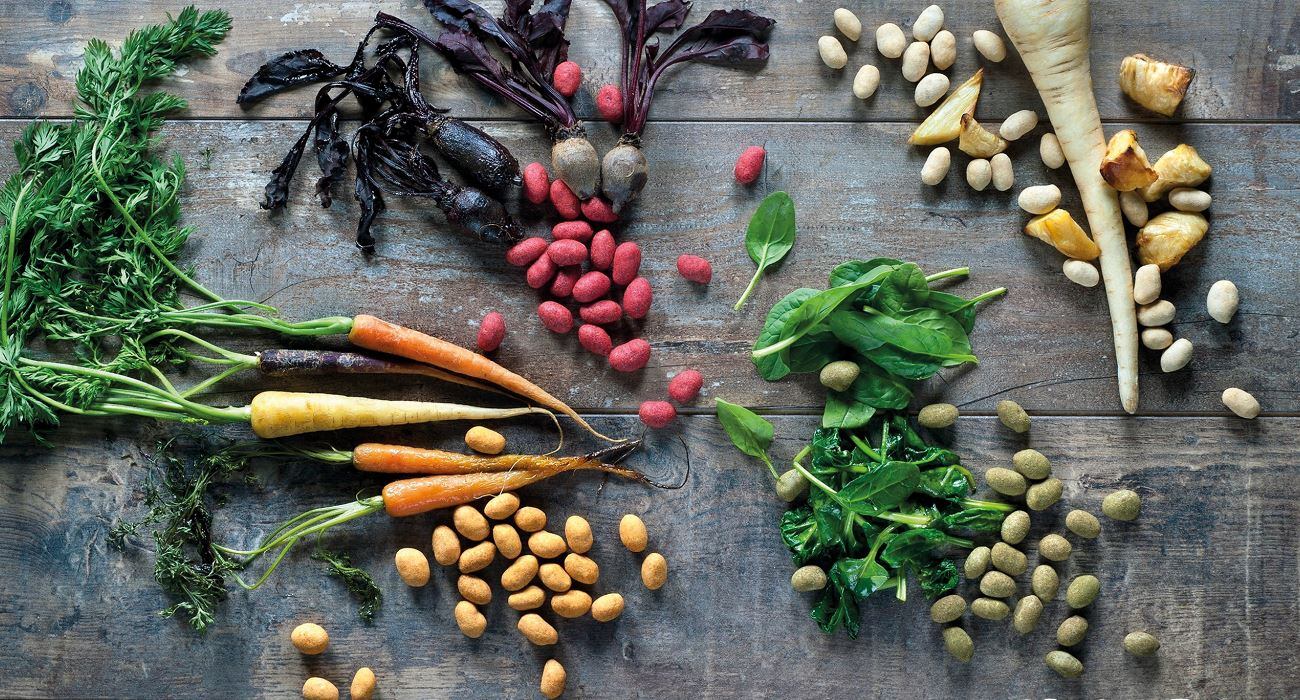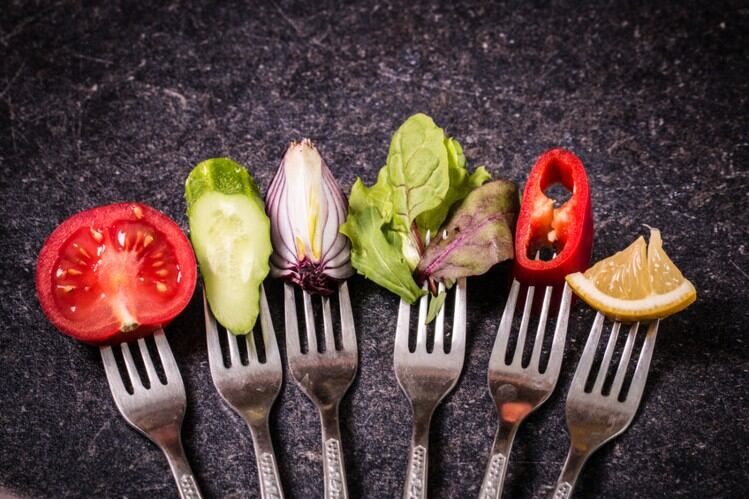Last year Griffith Foods announced plans to double the size of its European business and triple its bottom line by 2027. The family-owned ingredients supplier, which counts QSR, food processors, retail and food service companies among its customers, has identified health, nutrition and sustainability as key to this goal and is stepping up its research and innovation spend with significant investment in coming years.
It has further revealed it is aiming for a 100% healthy nutrition-driven portfolio in 2027. By 2025, 100% of its herbs, spices and vegetables will be from certified sources and 100% of its supply base will be EcoVadis certified. Meanwhile, via the Griffith Sustainably Sourced programme, it currently supports over 900 farmers and plans to increase this number to over 10,000 by 2025.
It is working too towards full traceability across its entire supply chain, using technology (e.g. blockchain) to ensure all of its 3,000 active ingredients are sustainably sourced.
On top of this, it also aims to have full recovery of its waste and packaging by 2025, creating a circular economy across all of it business units, and plans to reduce its water and energy usage by 20% across all sites in the same year.
Is sustainability profitable?
But are profit and sustainability at odds? No, Wim van Roekel, Griffith Foods’ President, Europe and Africa, told FoodNavigator. “We believe we're only capable of having impact on the world around us by growing our business. But not just growing the business for the sake of growth, by growing the business for the purpose of having more impact and living our purpose,” he said.
He added that paying slightly more for sustainably sourced materials would prove cost-effective in the long term. "Sometimes you need to make a choice: accept that you’re incorporating in some cases more expensive ingredients in your portfolio than you could use otherwise if you would buy the more commodity alternatives,” he explained. “But we believe that in order to live our purpose we need to scale for impact, and by consistently growing this value chain there will be a sustainably sourced raw material stream that's going to be also cost effective.”
Testament to this mindset, he continued, was the creation last year of Terova, Griffith’s arm devoted to the supply of sustainably sourced spices, herbs, botanicals and innovative ingredients.
“We founded Terova to commercialise sustainably sourced ingredients because we found there is a market beyond what we use in our own applications,” said van Roekel. “There is a market for sustainably sourced ingredients. So, by continuing to invest in the value chain the scale is sufficiently large to be also cost effective.”
Tailored innovation solutions
Van Roekel outlined the number of initiatives and innovations Griffith is pursuing to achieve its ambitious goal of scaleable and ‘impactful, purpose-driven growth’. One is a focus on tailored innovation.
“What we've been changing over the last 3-4 years is bringing innovation platforms to market with a specific proposition that is meeting the needs of a broader group of customers,” he explained. “That will allow us to tailor it against the specific needs of a customer once we get closer to further into the commercialisation process.”
An example is Griffith’s ‘Vegetable Based Never Fry Coating System’, an award winner at last year’s FiE which it claims is a healthier alternative to frying that reduces fat by up to 30% compared to using fryers. It combines a seasoned batter, premium breading mixture and top glaze containing dehydrated vegetables. The frying step is made obsolete by using a unique oven baked hot air treatment to lock in fantastic taste – this improves nutritional profiles and also reduces production costs.
"It's a nice example of an innovation platform that has been designed to be applied in protein applications, into snack foods, into potato applications,” said van Roekel. “It has a broad range of end applications that can be tailored for the final solution.”
Other examples of tailored innovation include Griffith’s sodium and sugar-reduction solutions: the Sodium Flex and Sugar Flex tool kits, which involve using a host of solutions in collaboration with the customer to find the best solution to fit the final application.
The company is however keen to take things a step further with ingredients coming with additional functional or sensorial properties. It is, for example, launching a new generation of nutritional coatings where it adds some fibre, vitamins and proteins. The coating system can thus potentially offer increased flexibility in improving front of pack nutritional labelling, such as Nutriscore, according to the company.
Is the health trend on the back or front seat?
The COVID pandemic, however, has appeared to have put the health trend on hold at least for the time being among consumers. Where does this leave demand from food manufacturers and end consumers for healthy and nutritious solutions?
"Our market assessment is that to a large extent the trends that we've seen prior to the pandemic are still going to be valid post COVID-19,” responded van Roekel.
“You obviously see some fluctuations in some short-term behaviour - people want to reward themselves for sitting inside behind a desk for most of the day - and they reward themselves with some chocolate.”
But the fundamental trend of consumers increasingly demanding healthy and nutritious choices is not going away, he said. The company has also noted it has seen in several reports that consumers are even more aware of what they are choosing from a health and nutrition perspective as a result of Covid.
As a result, suppliers such as Griffith are ever more seeking to cater to this cohort. What’s more, technical advancements are making it easier for industry to offer healthy and nutritious foods that don’t compromise on taste. And on top of this, is a regulatory environment in Europe seeking to improve consumers’ food choices through nutrition labelling.
He explained that every one of the company’s latest innovations follows a clear description of what it considers to be healthy nutrition. “So that's either clean label, reduction, elimination, fortification and or organic, or combinations of these - we always use these parameters as the starting point for everything we bring to market. And we do that because we believe that if we want to be a healthy nutrition-driven company it's not enough just to pretend that. We want to be able to claim and to prove that every one of the propositions we bring to market matches these parameters.
“We're aiming for 100% health and nutritious driven portfolio in fiscal 2027. Right now, we're at 40%. So we still have a significant part of our portfolio that doesn't necessarily meet all our criteria and that's OK because it's very much a reflection of what we see in the industry. What we are driving for is delicious and nutritious… and we are driving our innovation platforms along these lines.”
The response from manufacturers is positive, he insisted. “By always bringing a nutritious and delicious element to the table, customers really engage with us on that and say ‘OK, that makes sense. Our customers, the consumers, are buying into it and they really would like the healthier option’."
Food loss commercialisation
Griffith also plans to improve the food industry via upcycling, explained van Roekel. "In our health and nutrition platform we've identified a number of initiatives to cover targeted nutrition. One is food loss commercialisation. We believe that there is a humungous amount of food that is being wasted across the globe that could be much better applied than it currently is.”
The company is currently collaborating with a start-up in the US to commercialise the waste stream of brewers’ spent grain. According to van Roekel, brewers' spent grain is ‘a very good source of some nutrients plus it has some great capabilities to manufacture coatings’.
“We use it as a texturiser in food products. It’s a wonderful ingredient that can be applied in multiple applications. This is an example of something we've actively commercialised. It’s also scaleable because there are breweries across the globe that are dealing with similar problems in terms of how to commercialise their waste stream. We can help that. We are now exploring other opportunities to do exactly the same with other waste streams.”
Another example of waste stream commercialisation is green banana flour, made from whole, peeled, green bananas. Green bananas have virtually no sugar before ripening which, coupled with zero salt, offers a far healthier foundation for any product, according to Griffith. The flour has a smooth texture, neutral taste and may be used for nutritional enhancements in a range of food and beverage applications.
"I find it one of the most satisfying elements of my job, that I have to honour of working for a company that takes sustainability really seriously,” added van Roekel, “because it’s easy to say it but it’s very difficult to actually do it and to make it tangible and to prove to ourselves that we are serious about making the planet a better place to live, and that's exciting.”





